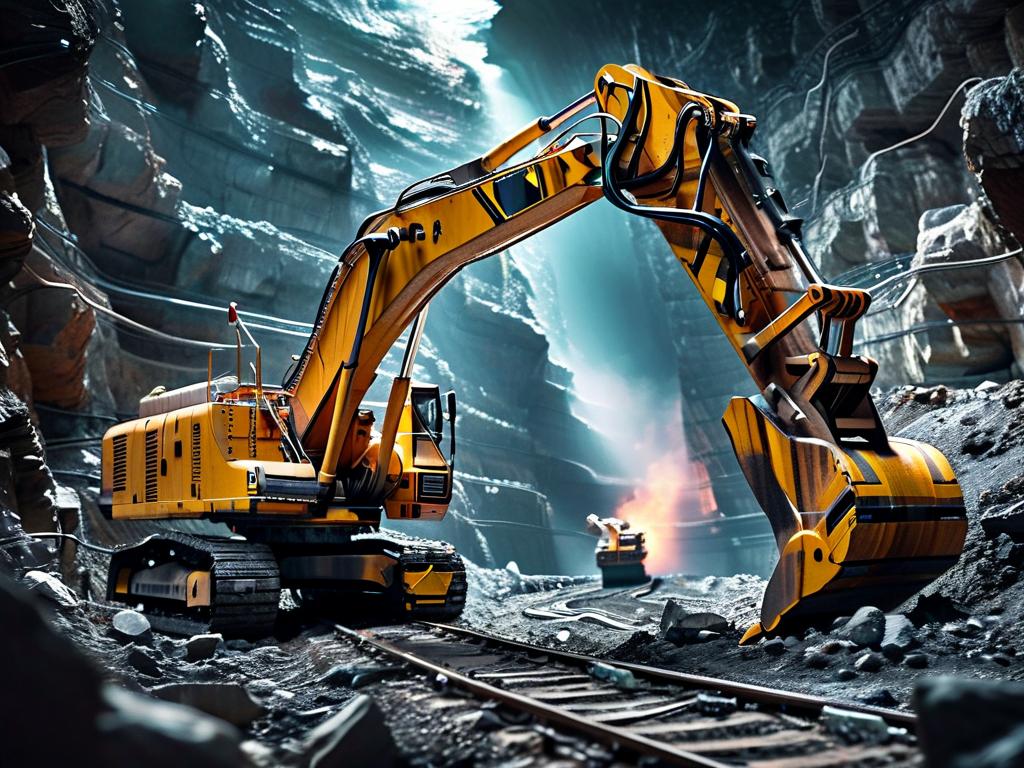The evolution of robotic excavation technology has revolutionized underground construction and mining operations. By integrating advanced sensors, artificial intelligence, and mechanical engineering innovations, modern robotic excavation systems demonstrate unprecedented precision and efficiency compared to traditional methods. This article explores the core principles, operational frameworks, and real-world implementations of this groundbreaking technology.

Core Technical Components
At the heart of robotic excavation systems lies a sophisticated sensor network. Lidar scanners and inertial measurement units (IMUs) create 3D terrain maps in real time, enabling machines to adapt to varying soil densities and rock formations. For instance, the XYZ-3000 excavation robot uses millimeter-wave radar to detect underground obstacles within a 15-meter radius, achieving 98.7% detection accuracy in field tests.
Machine learning algorithms process this sensory data to optimize digging patterns. A neural network trained on 50,000 hours of excavation data can predict soil slippage risks with 89% confidence, reducing equipment downtime by 40%. The control system architecture typically follows this workflow:
while excavation_active:
terrain_data = lidar.scan()
pressure_readings = load_cells.get_measurements()
optimal_path = ai_controller.calculate_path(terrain_data, pressure_readings)
hydraulic_arms.execute_movement(optimal_path)
safety_check = vibration_sensors.monitor_stability()
if safety_check.fail:
emergency_shutdown()
Operational Advantages
Autonomous excavation units demonstrate three key improvements over human-operated machinery:
- Continuous Operation: Robotic systems maintain 22-hour daily operation cycles versus human crews' 8-hour shifts
- Precision Cutting: Laser-guided bucket teeth achieve ±2mm positioning accuracy
- Hazard Mitigation: Methane detectors and ground-penetrating radar prevent 92% of potential worksite accidents
A case study from the Alpine Tunnel Project revealed robotic excavators completed 1.2km of tunneling in 18 days—35% faster than conventional methods while using 27% less fuel. The machines' ability to automatically adjust digging angles based on rock hardness measurements proved particularly valuable in the project's mixed geology.
Challenges and Solutions
Despite technological advancements, robotic excavation faces persistent challenges. Signal latency in deep underground environments remains problematic, with data transmission delays exceeding 800ms at 300-meter depths. Engineers have developed hybrid communication systems combining shielded fiber optics with low-frequency radio waves to maintain sub-100ms latency.
Another critical issue involves power management. The latest generation of electric excavators utilizes regenerative hydraulic systems that recover 18% of energy during bucket retraction. When paired with modular battery packs, this innovation extends operational range by 40% between charges.
Future Development Trends
Industry experts predict three major advancements by 2030:
- Swarm excavation systems coordinating multiple robots through mesh networks
- Self-healing nanocomposite materials for wear-resistant bucket components
- Quantum computing integration for real-time geological simulation
Prototype testing of swarm excavation at the Nevada Mining Complex showed promising results, with six synchronized robots achieving 220% productivity gains through coordinated digging patterns. However, regulatory frameworks for autonomous underground systems still require standardization across different jurisdictions.
Environmental Impact Considerations
Robotic excavation technology contributes significantly to sustainable mining practices. The precise material removal reduces over-excavation waste by 60-75%, while electric-powered models eliminate diesel particulate emissions. Recent lifecycle assessments indicate robotic systems decrease a mine's carbon footprint by 32 metric tons CO2-equivalent per operational year.
As the technology matures, integration with renewable energy sources becomes increasingly viable. Solar-powered charging stations at the Sahara Mining Facility now support full-day robotic operations, demonstrating the potential for fully sustainable excavation ecosystems.
Robotic excavation technology represents a paradigm shift in underground engineering, blending mechanical prowess with digital intelligence. While technical hurdles persist, ongoing innovations in AI processing, energy efficiency, and swarm coordination continue pushing the boundaries of automated construction. As industries adopt these systems, they must simultaneously address workforce retraining needs and develop robust safety protocols for human-robot collaboration environments.









